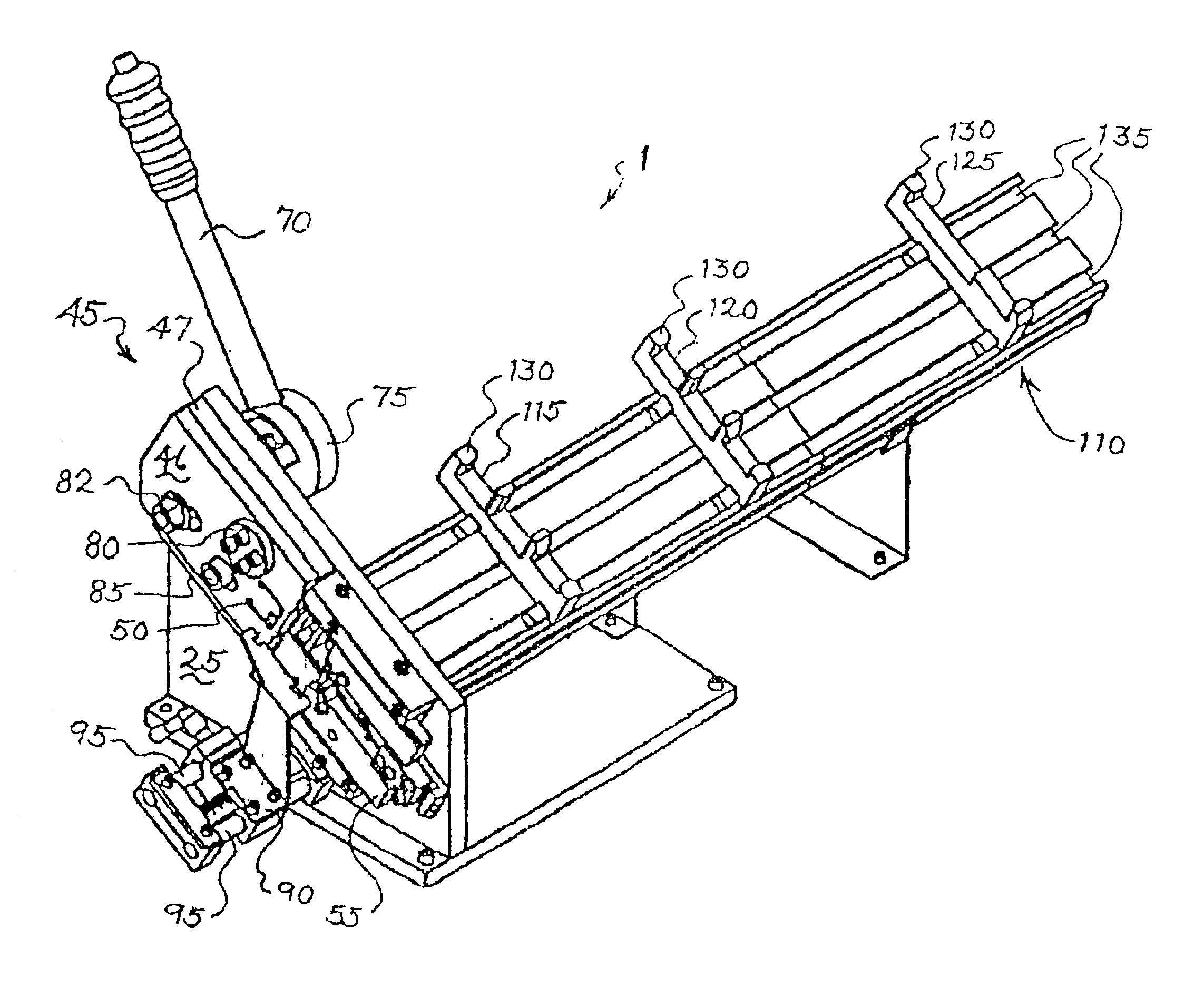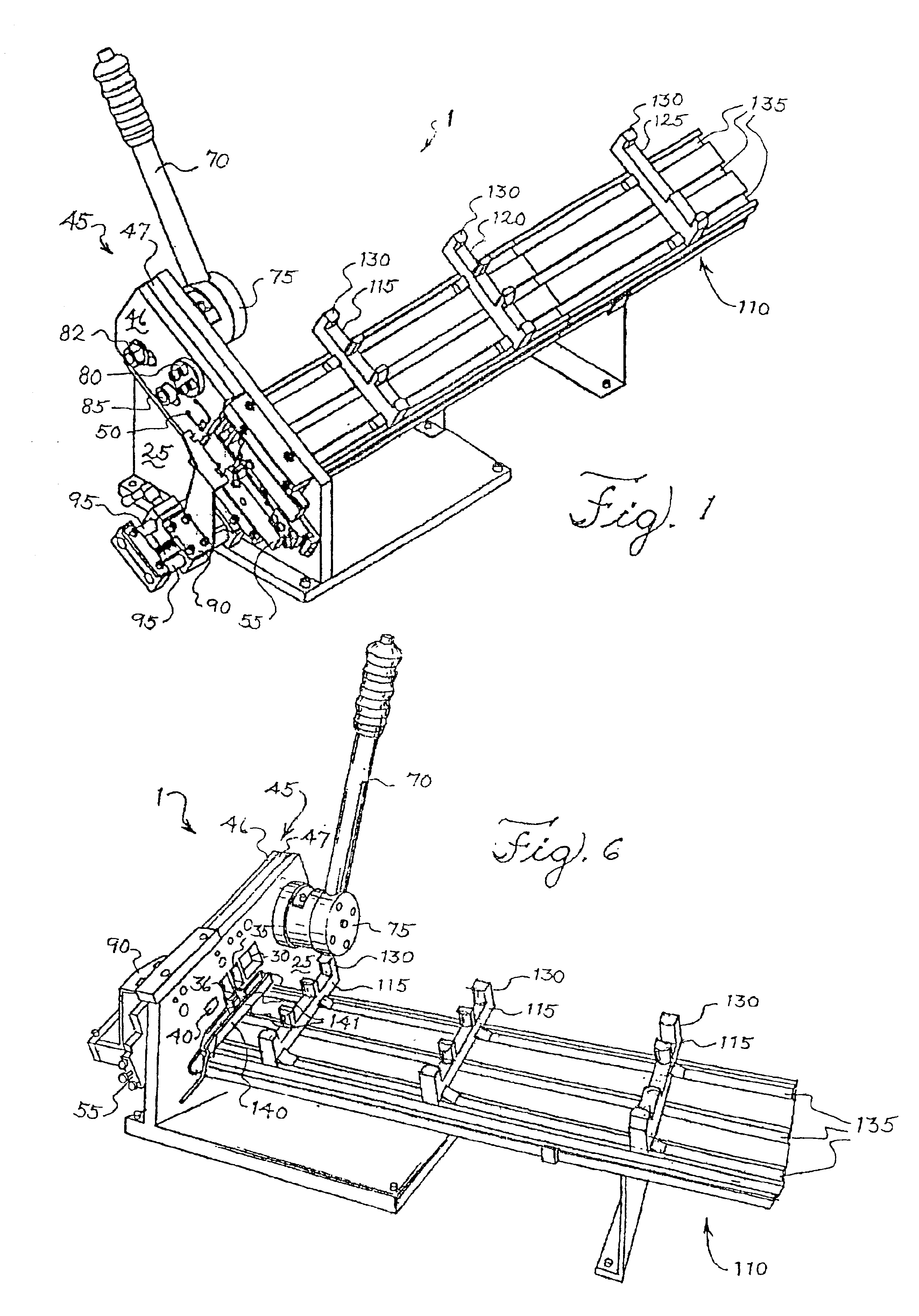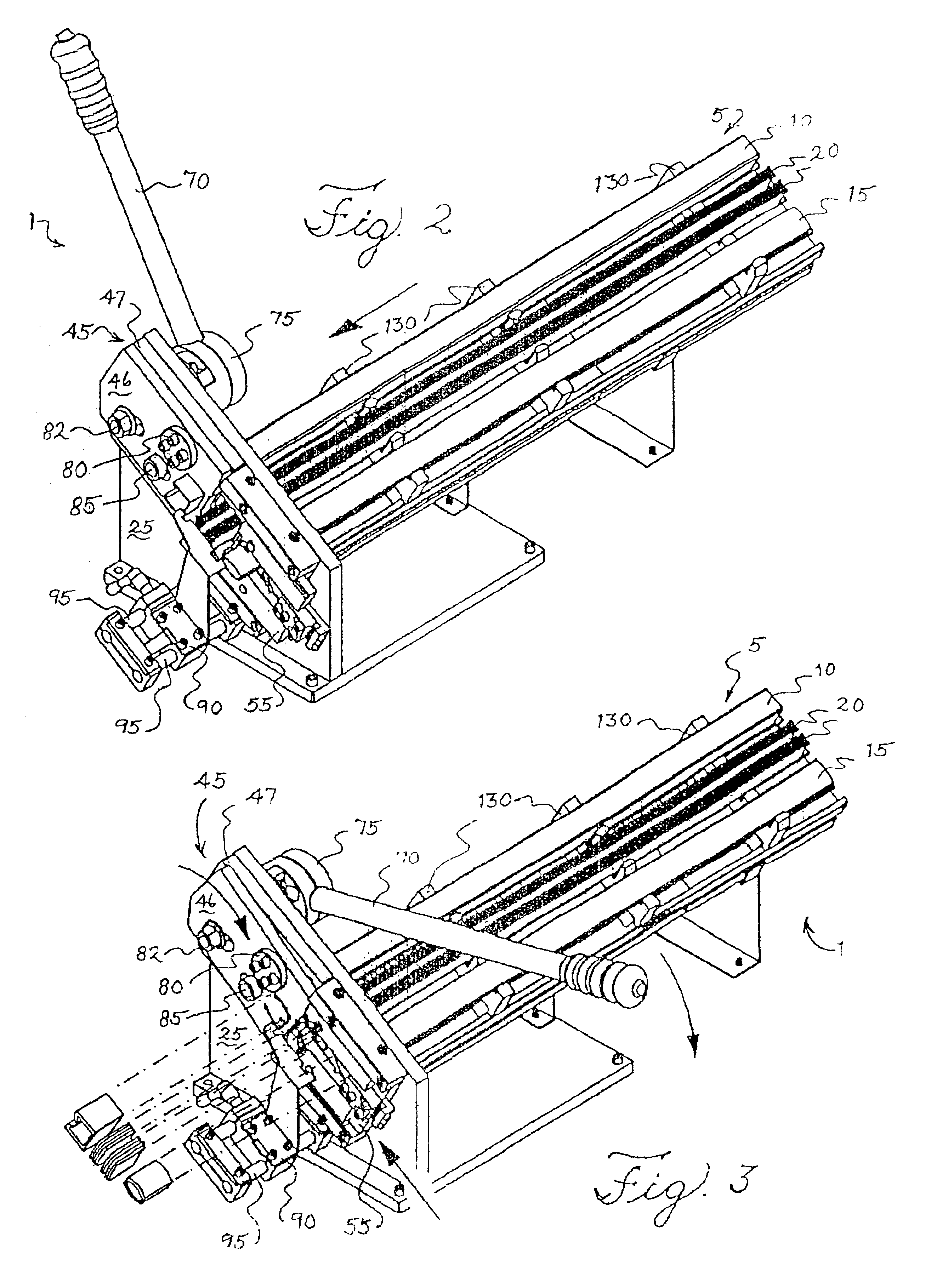Cutting apparatus and method for venetian blinds
a technology for venetian blinds and cutting tools, applied in the direction of manufacturing tools, stock shearing machines, door/window protective devices, etc., can solve the problems of increasing the size and complexity of such a machine, requiring a substantial amount of custom process time to custom build blinds, and reducing the efficiency of the custom process. , to achieve the effect of reducing the chance of components falling off and saving tim
- Summary
- Abstract
- Description
- Claims
- Application Information
AI Technical Summary
Benefits of technology
Problems solved by technology
Method used
Image
Examples
Embodiment Construction
The invention disclosed herein is susceptible to embodiment in many different forms. Shown in the drawings and described in detail hereinbelow are certain preferred embodiments of the present invention. The present disclosure, however, is an exemplification of the principles and features of the invention, but does not limit the invention to the illustrated embodiments.
Referring to FIGS. 1 and 2, an embodiment of a Venetian blind cutting apparatus 1 suitable for trimming the components of a Venetian blind 5, such as the head rail 10, the bottom rail 15, and a plurality of blind slats 20 according to the present invention is shown. Also shown in FIGS. 1 and 6 is a body 25 having a head rail opening 30, blind slat openings 35, 36, and a bottom rail opening 40. The bottom rail opening 40 is preferably configured to hold the bottom rail 15 flat so it may be cut along its long cross-sectional axis such as shown in the FIGURES, from front to back.
Located adjacent to the body 25 is a die 45...
PUM
| Property | Measurement | Unit |
|---|---|---|
| length | aaaaa | aaaaa |
| time | aaaaa | aaaaa |
| shape | aaaaa | aaaaa |
Abstract
Description
Claims
Application Information
 Login to View More
Login to View More - R&D
- Intellectual Property
- Life Sciences
- Materials
- Tech Scout
- Unparalleled Data Quality
- Higher Quality Content
- 60% Fewer Hallucinations
Browse by: Latest US Patents, China's latest patents, Technical Efficacy Thesaurus, Application Domain, Technology Topic, Popular Technical Reports.
© 2025 PatSnap. All rights reserved.Legal|Privacy policy|Modern Slavery Act Transparency Statement|Sitemap|About US| Contact US: help@patsnap.com



